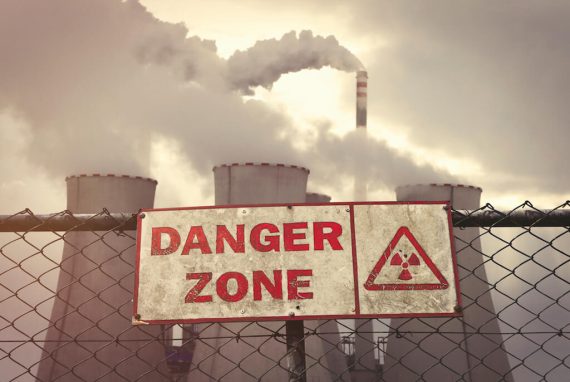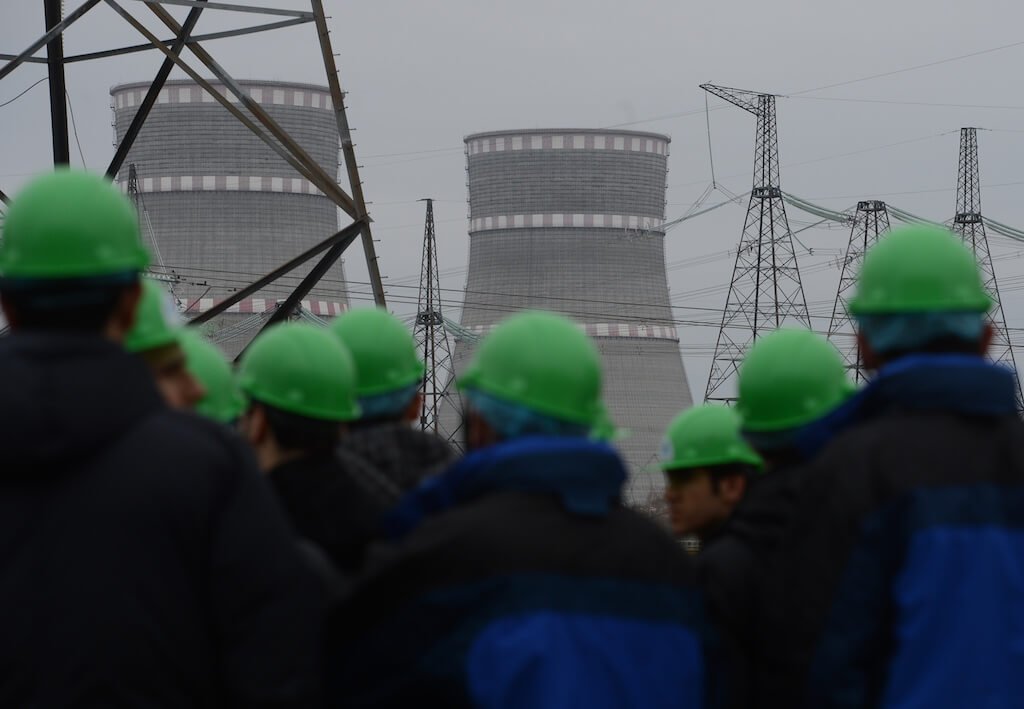Q.What is the New START treaty and why is it important?
The New START Treaty is the last remaining arms control agreement between the United States and Russia that puts limits on their strategic nuclear weapons and provides transparency between the two countries regarding their nuclear arsenals. Under the New START Treaty, both sides are allowed to have 1,550 deployed strategic warheads, which means that the nuclear warheads are on launchers either missiles or bombers. Each side can also have 800 total launchers – missiles or the aircraft-, 700 of which can be deployed.
The reality, however, is that there are other weapons that are not deployed and not counted under this treaty. So, the warheads awaiting dismantlement are not included in this Treaty.
And also, for the transparency measures, both the U.S. and the Russian sides can conduct 18 onsite inspections per year in nuclear facilities in the other country, and there is also information about the nuclear arsenals that is exchanged every six months, which helps both sides have some kind of confidence in their knowledge of how many weapons there are, and where they are located. That is important for stability and predictability in planning and why people are so worried about this treaty going away.
Q. What should we expect if the treaty is renewed -or not-?
First of all, I assume that the New START treaty will be extended, but if it were not, it would be the first time in 50 years without such limits on the U.S. and Russian nuclear weapons. And it feels that we would be losing that era of working together for our mutual security.
It is concerning because we have lost some other treaties. For example, the 1987 Intermediate-Range Nuclear Forces Treaty, signed by U.S. President Ronald Reagan and Soviet General Secretary Mikhail Gorbachev, banned a whole class of weapons that traveled at an intermediate-range, both conventional and nuclear.
The United States also recently withdrew from the Treaty of Open Skies, so it is not just about losing the New START.
But the U.S. and Russia left the Treaty in 2019, given that the two sides were unable to come together and address the serious allegations of Russian cheating during the Trump administration, and thus both sides have left that treaty.
The United States also recently withdrew from the Treaty of Open Skies, so it is not just about losing the New START. It seems as though the order, these institutions, and these norms are unraveling.
Q. The New START was first signed under the Obama administration. So, how did the four-year Trump administration impact the process?
New START continued under the Trump administration; both sides continued conducting inspections and exchanging information. But there was always the question of whether the treaty would be extended because it was originally designed for 10 years, and the text offered a one-time five-year extension. So, the time to start thinking about the extension was during the Trump administration, during whose term the Russian government came out on multiple occasions to state that they are in favor of this five-year extension.
However, the Trump administration started to focus on China, which is emerging as a global power, and suggested that it is time to bring China into these traditional arms control agreements. So, at first, the U.S. would not agree to the extension of the treaty because of this effort to try to get China to the table, but China did not see that it was the right time to join arms control limitations when it already has so many fewer than the United States and Russia.
Today, Russia and the U.S. have 90% of the nuclear weapons in the world. Given the circumstances, China argued that Russia and the U.S. possess 10 times higher number of nuclear weapons than China, and first they need to reduce their arsenals this before China joins the negotiations.
Q. Do you mean that the trend in the world is going towards disarmament with regards to nuclear weapons, or is it getting more inclined towards the accumulation of nuclear arms to be able to catch up with countries with nuclear weapons as in the case of China?
That is a really good question. And the answer is both. On one hand, you have all of the countries with nuclear weapons improving, updating, or increasing their arsenals. For example, the U.S. has a long-term modernization plan to update its delivery systems. Russia is also engaged in modernization and they are also building new capabilities. China seems to be increasing its number weapons, some estimates say that they have up to 500. We know that Pakistan, India, and North Korea are all either improving or increasing their arsenals as well. So, you have this trend where the nuclear-weapon states in the world do seem to be relying more on their nuclear weapons and maintaining them.
The U.S. plan for modernization accounts for having these weapons for the next 80 years, and thus it is hard to credibly say we are going to disarm when we have this plan for 80 years. On the other hand, you have the non-nuclear-weapon states in the world that are pushing for disarmament through the Treaty on the Prohibition of Nuclear Weapons (TPNW), which was negotiated in the summer of 2017. 50 countries ratified the Treaty, and it entered into force very recently on January 22, 2021. And so, you have this trend on one side with these non-nuclear-weapon states (NNWS) urging for disarmament rather than modernization. Those two trends make this whole nuclear order very challenging right now.
Q. Are there any sign of a rather multi-lateral nuclear treaty that could replace the New START? Are there any official talk with other nuclear-weapon countries such as India, Israel, Iran, North Korea, etc.?
I think a lot of people would say, we hope eventually we get to a multilateral limit. But again, there is that pressure that the U.S. and Russia still have to come down in their arsenal numbers. In the absence of a formal treaty, there is still a lot of opportunities for countries to talk in multilateral fora about their nuclear doctrine and ways to reduce the risk of a potential detonation, whether accidental or on purpose.
I do think it would be good for P5 countries, China, France, Russia, the U.K., and the U.S. to work on that. They already have P5 meetings within the context of the Nuclear Non-Proliferation Treaty (NPT), which came into force in 1970, and it is still the cornerstone of the whole non-proliferation order.
But some of the other states you mentioned are not in the NPT; India, Pakistan and Israel for example never joined, and North Korea withdrew from the NPT in 2003. It is also true that South Sudan is not in the treaty, but I assume that at some point in the future, they will join.
Still, it is a very long long-term vision to think all of these nuclear weapons states, whether they are in the NPT or not, coming together and thinking about how to pursue nuclear reductions or how to improve their security relationships. That is very difficult to imagine, but even having talks would be useful.
Q. What about the Biden era? Which developments do you expect under the Biden administration?
This past year, President Biden wrote a piece in Foreign Policy, saying that he would consider a sole-use doctrine, which is based on the idea that nuclear weapons are only useful for deterring other nuclear weapons, and so that they are not used for any other kind of military contingency. We can say that Biden is trying to reduce the role of nuclear weapons and limit the scope of where nuclear weapons are appropriately employed.
Recommended
I assume the Biden administration will quickly try to extend New START. There are a lot of people in the arms control and disarmament non-proliferation community that hope that the administration will extend for the full five years, which is allowed under the treaty. But there is also the pressure to develop the next treaty. There have also been some talks about whether to extend it, but for just one or two years. Five years is a long time, but it takes a lot of time to negotiate, so an extension of two years would put a lot of pressure to start negotiating the next Treaty.
Q. What would be different in this new Treaty that shall come to the table, an updated version of the New START?
I think the U.S. would like to see a treaty that is broader in terms of the types of nuclear weapons that it includes. The New START puts a limitation on deployed strategic weapons, but there is another category of nuclear weapons, called either “non-strategic” or “tactical weapons”, and these are not included in any treaties and have not ever been.
And so, the U.S. would like to capture these, because the Russians have more of these so-called “tactical weapons” than the U.S. does. And I think that at this point, many of us presume that any use of nuclear weapons is going to have a strategic effect. Even if it were a non-strategic weapon, it would still have huge consequences. Therefore this division between strategic and tactical is less meaningful.
The big security challenge in this realm from now on is going to be figuring out whether it is possible to bring different military technologies and capabilities to bear into one agreement because arms control is not just to limit weapons, it is to increase everyone’s security.

VIDEO: History of nuclear power
Q. In the light of this cloudy atmosphere that you depicted very clearly, I wish to ask, what’s next? What should we expect if the New START treaty is not renewed?
I think a lot remains to be seen regarding the United States and U.S. leadership. The Biden administration will be committed to multilateralism and finding solutions to working together at a multilateral level. But I think some of the challenges of the past four years are going to make that difficult. The U.S. has lost much its diplomatic core in this area; many of the people who had worked on these issues for years and years are not in government anymore. There is kind of that challenge of bringing people back into the government to focus on these issues, especially in the midst of other pressing challenges such as COVID-19, the economy, and climate change. But I do expect that the U.S. will be back in pursuing these things. For example, Joe Biden said that he wants to get back into the Iran Nuclear Deal, the Joint Comprehensive Plan of Action. So hopefully we will see more commitment to these solutions that involve countries working together.
It is important that we see arms control as a way to build up all of our security. And it is not a gift either side is giving to the other. We all have strategic interests in arms control, but it is something that we have broadly taken for granted. And we have the review conference for the Nuclear Nonproliferation Treaty (NPT) coming up in August 2021. So, that will be an important time to see where we are and to see if countries can work together or if it is going to get very divisive. That is an important meeting when looking ahead to the next year.
Rebecca Davis Gibbons is an assistant professor of political science at the University of Southern Maine and an associate at the Project on Managing the Atom at Harvard Kennedy School, The Belfer Center. Her research focuses on the Treaty on the Prohibition of Nuclear Weapons, arms control, the nuclear nonproliferation regime, and global order.







